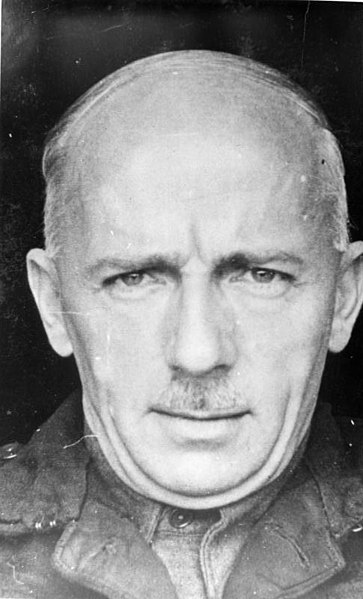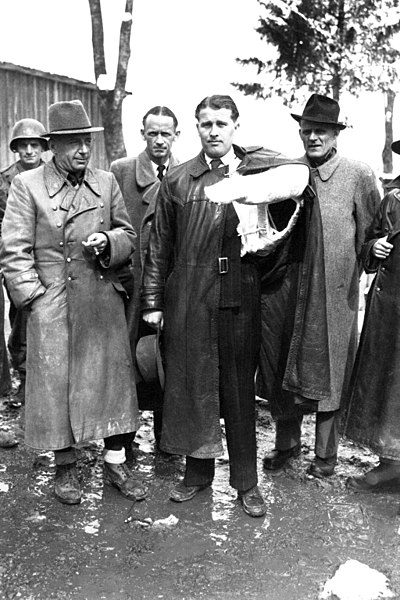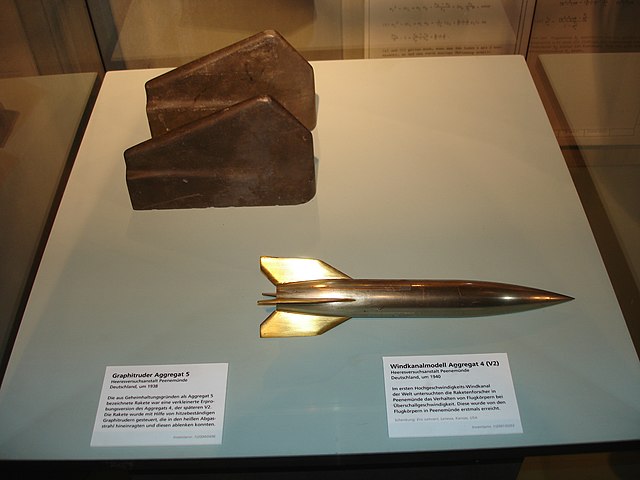Major-General Dr. Walter Robert Dornberger was a German Army artillery officer whose career spanned World War I and World War II. He was a leader of Nazi Germany's V-2 rocket programme and other projects at the Peenemünde Army Research Centre. After the war, the US Nazi scientist recruitment programme Operation Paperclip saw him move to the US, largely avoiding punishment for involvement in war crimes, to work for some decades in high positions in aerospace, including for Bell Aircraft and Boeing.
Portrait of Major General Walter Dornberger taken during captivity, 1945
Dornberger (left) with Wernher von Braun (in civilian clothes) in Peenemünde, February 1941
Dornberger (on the left, with hat) together with von Braun, after their surrender to Allies in Austria, May 1945
The V2, with the technical name Aggregat 4 (A4), was the world's first long-range guided ballistic missile. The missile, powered by a liquid-propellant rocket engine, was developed during the Second World War in Nazi Germany as a "vengeance weapon" and assigned to attack Allied cities as retaliation for the Allied bombings of German cities. The V2 rocket also became the first artificial object to travel into space by crossing the Kármán line with the vertical launch of MW 18014 on 20 June 1944.
Peenemünde Museum replica of V2
Wernher von Braun at Peenemünde Army Research Center.
Wind tunnel model of an A4 in the German Museum of Technology in Berlin.
Layout of a V2 rocket.






